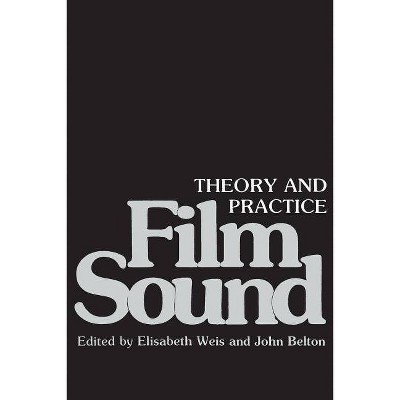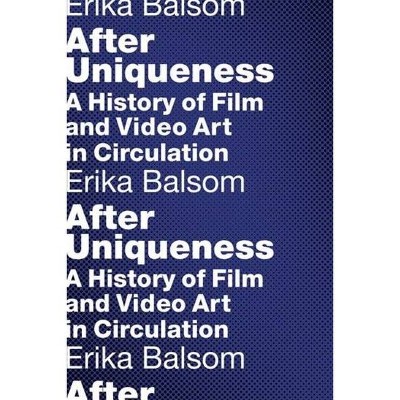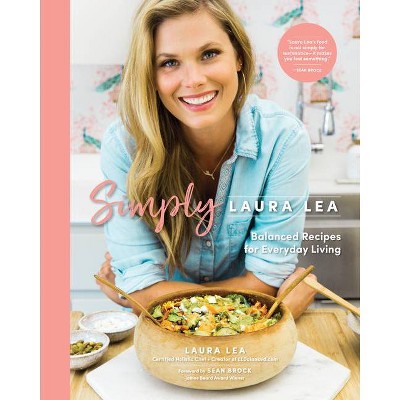Film Rhythm After Sound - by Lea Jacobs (Paperback)
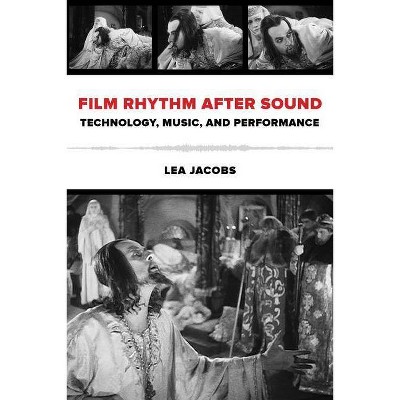
Similar Products
Products of same category from the store
AllProduct info
<p/><br></br><p><b> Book Synopsis </b></p></br></br>The seemingly effortless integration of sound, movement, and editing in films of the late 1930s stands in vivid contrast to the awkwardness of the first talkies. <i>Film Rhythm after Sound</i> analyzes this evolution via close examination of important prototypes of early sound filmmaking, as well as contemporary discussions of rhythm, tempo, and pacing. Jacobs looks at the rhythmic dimensions of performance and sound in a diverse set of case studies: the Eisenstein-Prokofiev collaboration<i> Ivan the Terrible, </i> Disney's <i>Silly Symphonies</i> and early Mickey Mouse cartoons, musicals by Lubitsch and Mamoulian, and the impeccably timed dialogue in Hawks's films. Jacobs argues that the new range of sound technologies made possible a much tighter synchronization of music, speech, and movement than had been the norm with the live accompaniment of silent films. Filmmakers in the early years of the transition to sound experimented with different technical means of achieving synchronization and employed a variety of formal strategies for creating rhythmically unified scenes and sequences. Music often served as a blueprint for rhythm and pacing, as was the case in mickey mousing, the close integration of music and movement in animation. However, by the mid-1930s, filmmakers had also gained enough control over dialogue recording and editing to utilize dialogue to pace scenes independently of the music track. Jacobs's highly original study of early sound-film practices provides significant new contributions to the fields of film music and sound studies.<p/><br></br><p><b> From the Back Cover </b></p></br></br>"<i>Film Rhythm after Sound </i>is the most convincing demonstration I've seen of how much Ezra Pound's description of poetry ('form cut in time') applies to narrative cinema. Everyone knows that dramatic motion pictures rely on rhythm and pacing to hold our interest and stimulate emotion, but until this book we have had almost no tools to analyze rhythm across the many forms it takes in feature films. This book is a major achievement."--James Naremore, author of <i>An Invention without a Future: Essays on Cinema</i> <p/> "This brilliant investigation of experiments with rhythmic form in early sound cinema fills a major gap in our understanding of film aesthetics. Against the backdrop of a revisionist assessment of Eisenstein's concept of rhythmic montage, Lea Jacobs explores the collaborative efforts of Hollywood directors, performers, screenwriters, composers, and editors in the 1930s to incorporate spoken dialogue and music into the formal design of synchronized sound films. In the process she invents nothing less than a new type of audiovisual analysis, one attentive to cinematic rhythm as a complex formal matter, irreducible to a single compositional principle or stylistic element and operating on multiple temporal scales. No existing study brings together an examination of acting, dialogue, music, and visual style in cinema in precisely this way. <i>Film Rhythm after Sound</i> will be of keen interest not only to film historians and analysts but also to scholars engaged with aesthetic issues across the performing arts."--Charles Wolfe, Professor of Film and Media Studies, University of California, Santa Barbara<p/><br></br><p><b> Review Quotes </b></p></br></br><br>"Exceptional... Pioneering one of the very few original studies in film rhythm, Jacobs delivers her much-appreciated contribution in <i>Film Rhythm after Sound</i> and successfully fills a long void in our understanding of the initial development and validation of rhythmic structuring in sound filmmaking."-- "Journal of Film and Video"<br><br>"Not just a significant contribution to the history of classical Hollywood cinema, but a broader reminder of what Michel Chion calls the "transsensoriality" of the film experience. As such, it is recommended to anyone who is interested in breaking down the wall that has often been erected between sound and image in the study of cinematic style."-- "Projections: The Journal for Movies and Mind"<br><br>"This excellent book should immediately earn a place on the reference shelves of film scholars, but it will also appeal to readers with an enthusiastic interest in film sound and music. Lea Jacobs... writes clearly and unpretentiously about a highly technical subject, shedding a particularly distinct light on the early sound period of Hollywood cinema... I have nothing but respect for the painstaking efforts this book represents." -- "Cineaste" (6/1/2016 12:00:00 AM)<br><br>"I'll start with a simple declarative statement: this is a brilliant book. If you care about the way that movies are made and experienced, you need to read it. Now."--Kent Jones "Film Comment" (5/1/2015 12:00:00 AM)<br><br>Finely tuned . . . Jacobs expertly analyzes the scores of early sound films, brilliantly opening up the experimental (and clever) use of rhythm, tempo, and sound effects.; This is a virtuoso performance on the cinematic art of tempo and rhythm.--T. Lindvall "CHOICE" (6/1/2015 12:00:00 AM)<br><p/><br></br><p><b> About the Author </b></p></br></br><b>Lea Jacobs</b> is Professor of Film at the University of Wisconsin-Madison and author of <i><i>The Decline of Sentiment: American Film in the 1920s</i></i>.
Price History
Price Archive shows prices from various stores, lets you see history and find the cheapest. There is no actual sale on the website. For all support, inquiry and suggestion messagescommunication@pricearchive.us
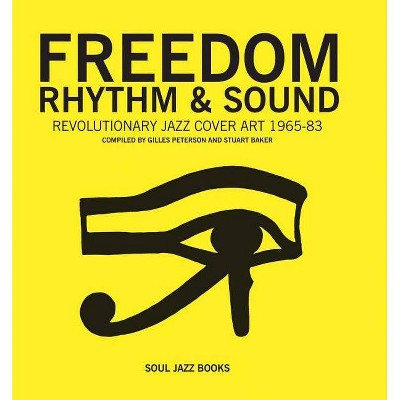
![Beneath the Rhythm and Sound [LP] - VINYL](https://pisces.bbystatic.com/image2/BestBuy_US/images/products/2983/29837285_sa.jpg)
